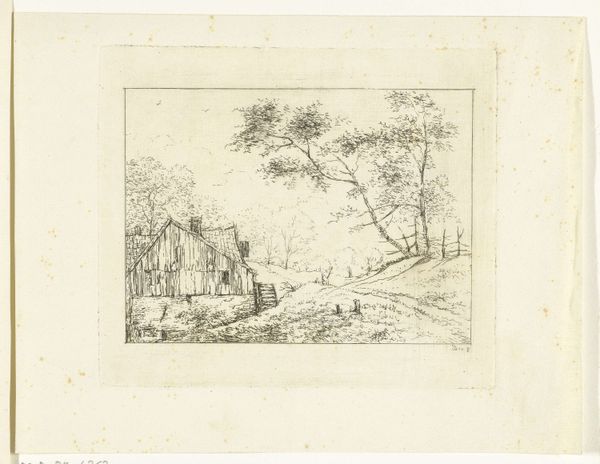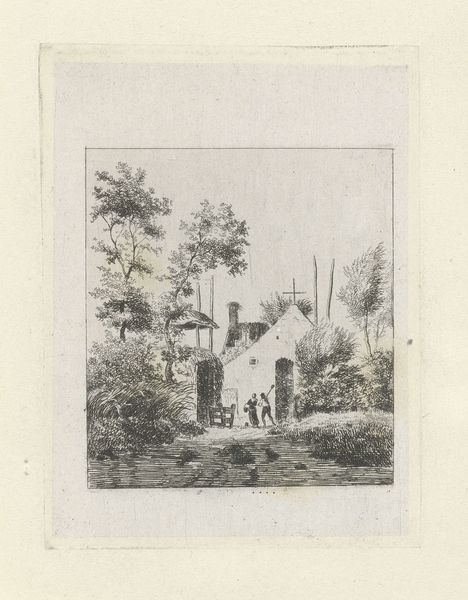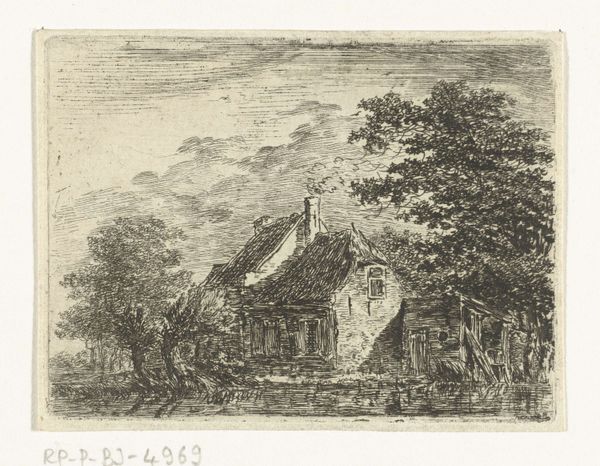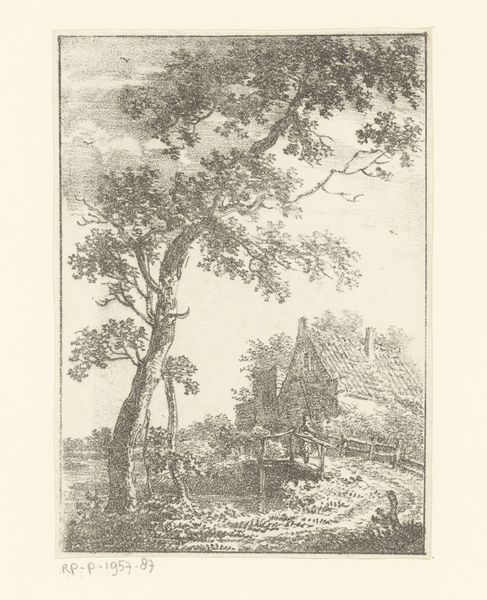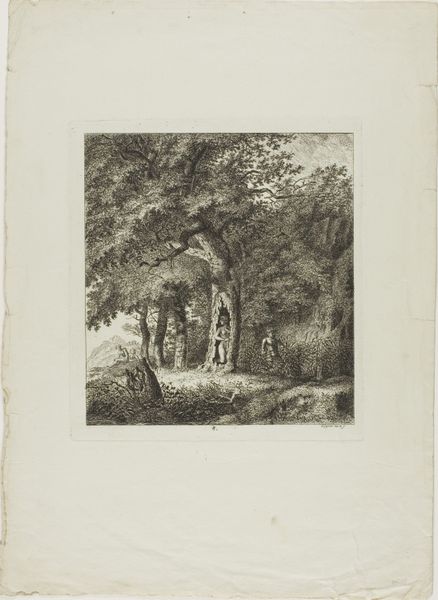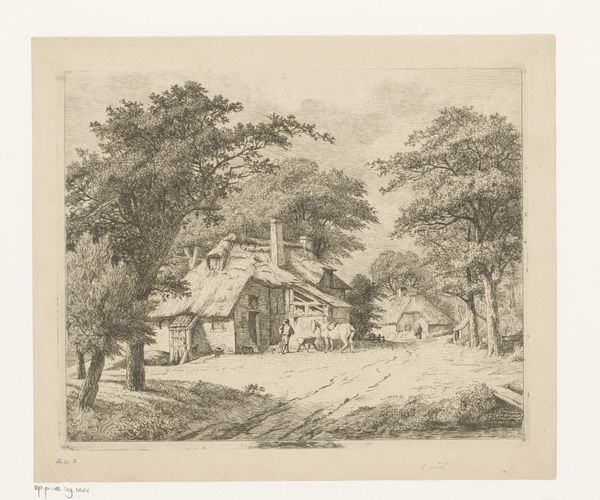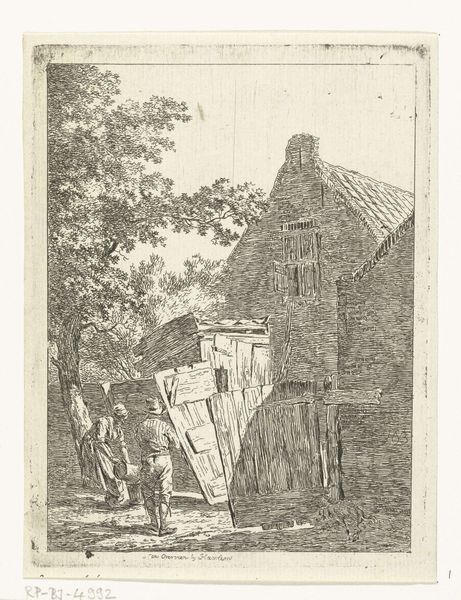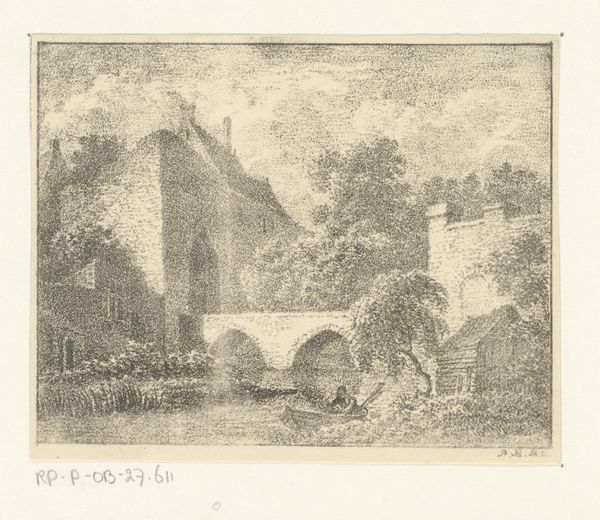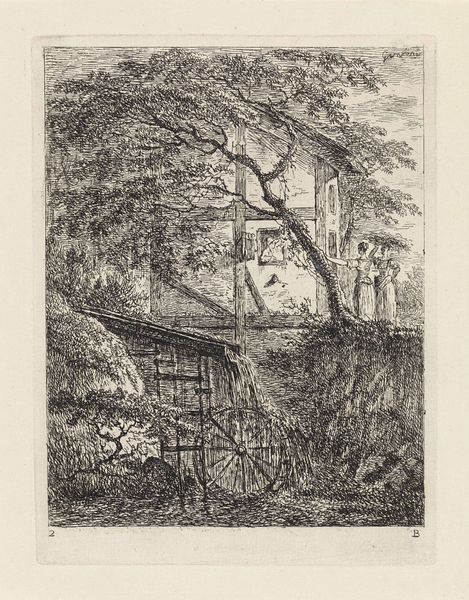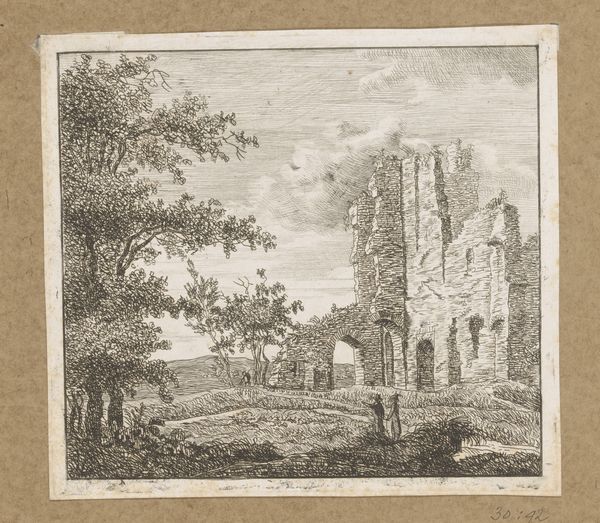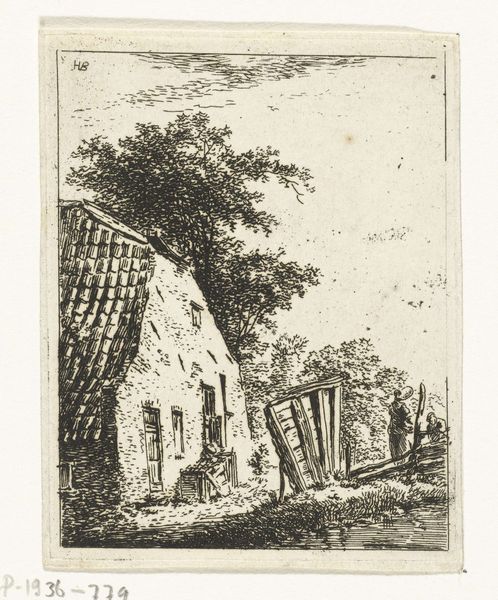
drawing, paper, ink, pencil
#
drawing
#
landscape
#
paper
#
ink
#
pencil
Dimensions: height 124 mm, width 100 mm
Copyright: Rijks Museum: Open Domain
Editor: Here we have Pieter Bartholomeusz. Barbiers' "House in a Forest and Seated Figure," made sometime between 1809 and 1837 using ink, pencil and paper. It’s a very tranquil scene, almost idyllic. How do you interpret this work? Curator: Well, considering the period, we see the rising influence of Romanticism and its relationship to landscape. It's more than just a depiction of nature; it’s about feeling, about the individual's relationship to a broader environment, and how emerging urbanity created a cultural demand for ‘nature’. How does that inform the placement of the solitary figure in the foreground? Editor: That's interesting. It seems that the figure becomes a proxy for the viewer. We see nature through their eyes, this solitary figure existing within a new awareness of 'nature', far away from city life? Curator: Precisely! The drawing subtly promotes an idealized relationship with nature at a time when industrialization was starting to reshape the world, and therefore impacting social experiences. This work asks viewers to connect with a perceived simpler time or reality. But who could actually *access* these realities or idyllic scenes? Editor: Good point. Perhaps the art also comments on emerging social class, and those who have the opportunity to experience it. Did Barbiers engage with politics directly in other works? Curator: While I would not go so far as to say Barbiers engaged directly, this kind of romantic imagery inherently makes political and cultural arguments. Even an artist creating landscapes participates in an emerging and ever changing marketplace and patronage system, and decides how their voice will exist within those power structures. Editor: That reframes the work significantly for me. It’s not just a nice scene, but a statement within a shifting social and economic environment. Thank you! Curator: And thank you, it's vital to view artworks as objects that are situated within specific histories, and not in a vacuum.
Comments
No comments
Be the first to comment and join the conversation on the ultimate creative platform.
